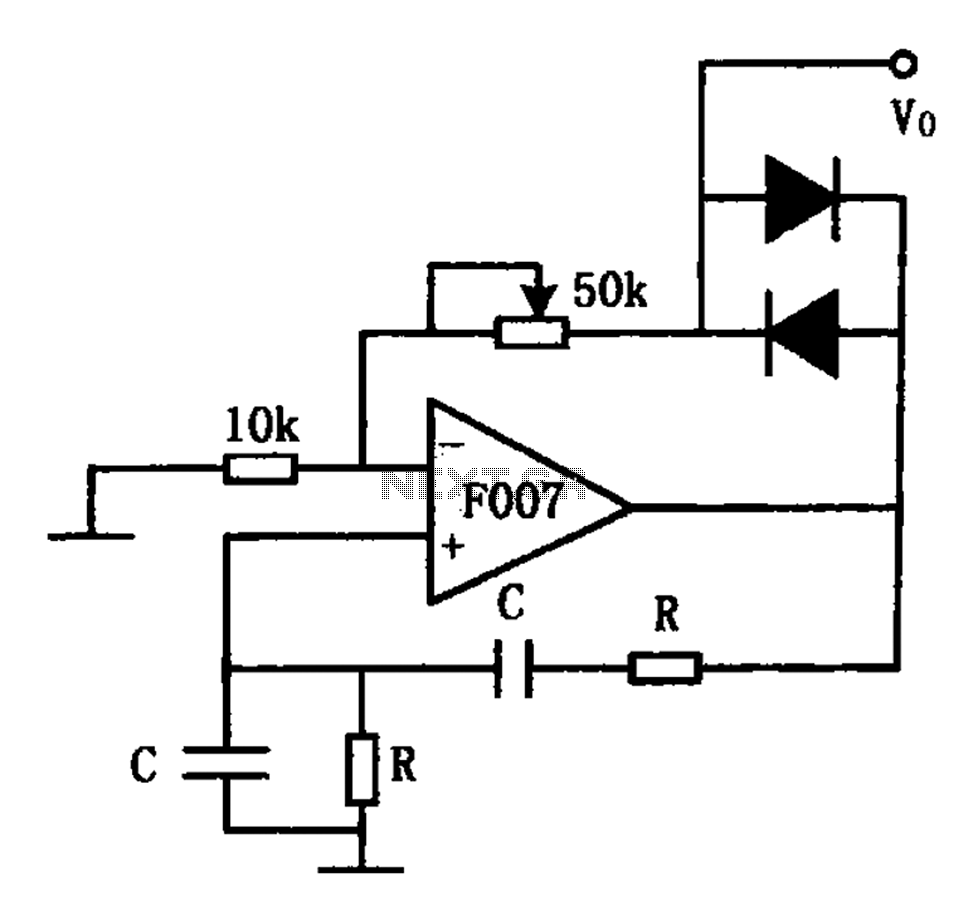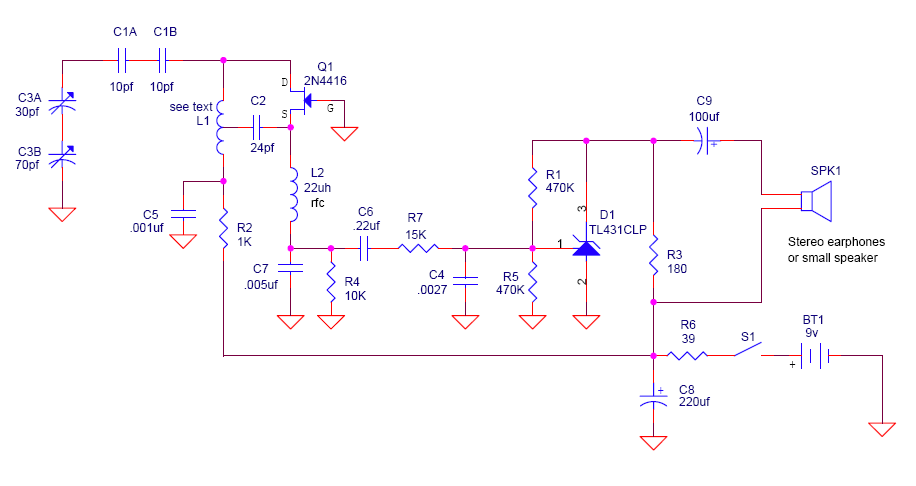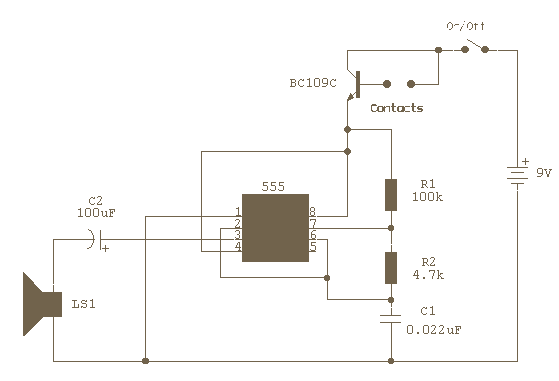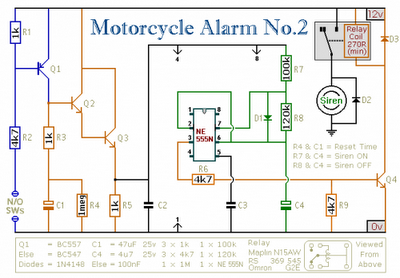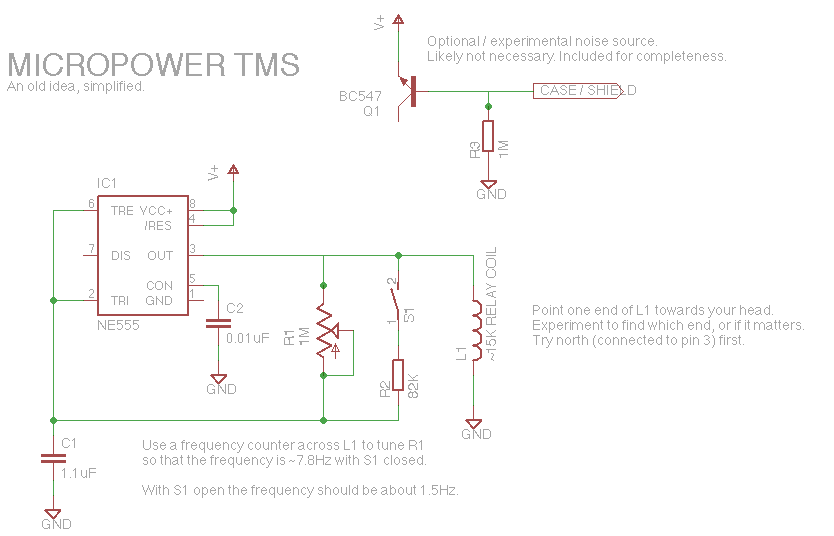
radio wave alarm
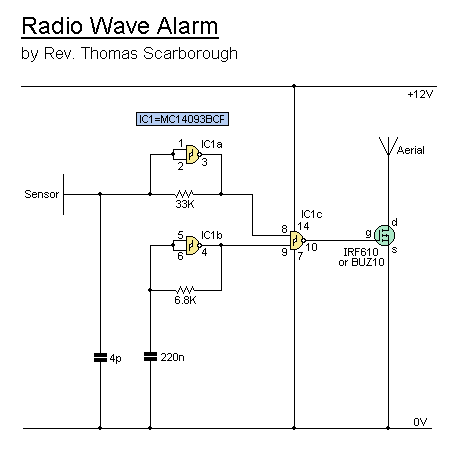
This simple alarm circuit can effectively alert users to the presence of an intruder, providing notification before they even reach the doorstep.
The circuit is designed to be straightforward and efficient, utilizing basic electronic components to create an effective security solution. At its core, the alarm circuit typically includes a power source, a sensor, a sound-generating device (such as a buzzer or siren), and a control unit, which may consist of a transistor or a microcontroller, depending on the complexity of the design.
The sensor can be a passive infrared (PIR) sensor, which detects motion by measuring changes in infrared radiation in its environment. When the sensor detects movement, it triggers the control unit, which activates the sound-generating device. This alert serves as both a warning to the user and a deterrent to potential intruders.
To enhance the circuit's functionality, additional features may be integrated. For example, a delay timer can be included to prevent false alarms from pets or small animals. The circuit can also be designed to include a manual reset switch, allowing users to deactivate the alarm after it has been triggered.
Power supply options may vary, with possibilities including battery operation for portability or mains connection for continuous power. The choice of components should consider factors such as voltage ratings, current requirements, and the overall reliability of the system.
In summary, this alarm circuit provides a practical solution for enhancing security, utilizing simple yet effective technology to alert users of potential intrusions. Its design can be adapted to meet specific needs, making it a versatile choice for home or small business security applications.This very simple alarm circuit is sure to have the police beating a path to your door - however, it has the added advantage of alerting you to their presence even before their footsteps fall on the doormat. 🔗 External reference
The circuit is designed to be straightforward and efficient, utilizing basic electronic components to create an effective security solution. At its core, the alarm circuit typically includes a power source, a sensor, a sound-generating device (such as a buzzer or siren), and a control unit, which may consist of a transistor or a microcontroller, depending on the complexity of the design.
The sensor can be a passive infrared (PIR) sensor, which detects motion by measuring changes in infrared radiation in its environment. When the sensor detects movement, it triggers the control unit, which activates the sound-generating device. This alert serves as both a warning to the user and a deterrent to potential intruders.
To enhance the circuit's functionality, additional features may be integrated. For example, a delay timer can be included to prevent false alarms from pets or small animals. The circuit can also be designed to include a manual reset switch, allowing users to deactivate the alarm after it has been triggered.
Power supply options may vary, with possibilities including battery operation for portability or mains connection for continuous power. The choice of components should consider factors such as voltage ratings, current requirements, and the overall reliability of the system.
In summary, this alarm circuit provides a practical solution for enhancing security, utilizing simple yet effective technology to alert users of potential intrusions. Its design can be adapted to meet specific needs, making it a versatile choice for home or small business security applications.This very simple alarm circuit is sure to have the police beating a path to your door - however, it has the added advantage of alerting you to their presence even before their footsteps fall on the doormat. 🔗 External reference
